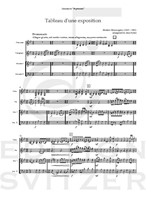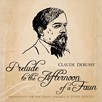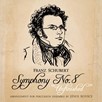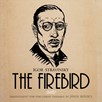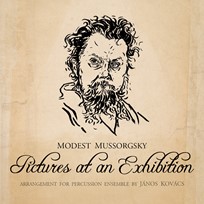
Pictures at an Exhibition
Composer: Modest Mussorgsky
Instrument: Percussion Ensemble
Level: Advanced
Published: 2014
Price: €50.00
Item details
-
Description +
-
Arranged by János Kovács
Duration: 30 min.
Pictures at an Exhibition is arguably the most famous work of Russian composer Modest Mussorgsky (1839-1881). It was originally a suite composed for piano, but has become best-known in the form of Maurice Ravel’s 1922 arrangement for orchestra.
Mussorgsky wrote Pictures… in 1874 as an homage to his friend Viktor Hartmann, an architect and painter whose death had bereaved him. After Hartmann’s passing a large exhibition of his paintings was held in the Academy of Fine Arts in St. Petersburg. Mussorgsky himself had lent pieces from his own collection to the exhibition, and after visiting it he felt inspired to write a musical piece that would resemble a tour of an art collection.
This reflects in the way Pictures… is conceived: the visitor enters the exhibition space, looks at the first exhibit, then walks on, views the next one, and so forth. So the musical work is divided into ten movements, the “pictures” themselves, and a recurring “promenade” theme, that represents the stroll between the displays. The “pictures” have a very descriptive quality, compelling surprising visual imagery to the listener’s mind, while the “promenades” are sometimes leisurely, alert, or sad, echoing Mussorgsky’s state of mind upon seeing his departed friend’s artworks.
The works that Mussorgsky drew inspiration from were watercolours and drawings that Hartmann had made during his travels. The critic Vladimir Stasov wrote short descriptive notes to accompany each picture:
No. 1: Gnomus - "A sketch depicting a little gnome, clumsily running with crooked legs."
No. 2: The Old Castle - "A medieval castle before which a troubadour sings a song."
No. 3: Tuileries - "An avenue in the garden of the Tuileries, with a swarm of children and nurses."
No. 4: Bydlo (The Ox-Cart) - "A Polish cart on enormous wheels, drawn by oxen."
No. 5: Ballet of the Unhatched Chicks - "Hartmann's design for the décor of a picturesque scene in the ballet Trilby."
No. 6: Samuel Goldenberg and Schmuyle - "Two Jews: Rich and Poor."
No. 7: The Market at Limoges - "French women quarrelling violently in the market."
No. 8: Catacombae (Sepulcrum romanum) and Con mortuis in lingua mortua (The Catacombs - Roman sepulcher and With the Dead in a Dead Language) - "Hartmann represented himself examining the Paris catacombs by the light of a lantern."
No. 9: The Hut on Fowl's Legs - "Hartmann's drawing depicted a clock in the form of Baba-Yaga's hut on fowl's legs. Mussorgsky added the witch's flight in a mortar."
No. 10: The Great Gate of Kiev - "Hartmann's sketch was his design for city gates at Kiev in the ancient Russian massive style with a cupola shaped like a slavonic helmet."
Amália Kovács
Târgu Mures, January 2014
-
-
Instrumentation +
-
Percussion Ensemble:
1 Xylorimba (or Xylophone)
1 Vibraphone
2 Marimbas
-
-
About the composer +
-
Modest Petrovich Mussorgsky (21 March [O.S. 9 March] 1839 – 28 March [O.S. 16 March] 1881) was a Russian composer, one of the group known as "The Five". He was an innovator of Russian music in the romantic period. He strove to achieve a uniquely Russian musical identity, often in deliberate defiance of the established conventions of Western music.
Many of his works were inspired by Russian history, Russian folklore, and other nationalist themes. Such works include the opera Boris Godunov, the orchestral tone poem Night on Bald Mountain and the piano suite Pictures at an Exhibition.
For many years Mussorgsky's works were mainly known in versions revised or completed by other composers. Many of his most important compositions have posthumously come into their own in their original forms, and some of the original scores are now also available.
-
-
Reviews +
-
Review (Percussive Notes, July 2016)
Perhaps the most well-known of Mussorgsky’s compositions, “Pictures at an Exhibition” is one of the cornerstones of the Russian contribution to the Romantic era. Composed in 1874, and arranged by Maurice Ravel for orchestra in 1922, Mussorgsky wrote “Pictures” as an homage to his friend Viktor Hartmann, who was an affluent architect and painter.
János Kovács has done a wonderful job with the arrangement for mallet quartet. The orchestrations are so close to the original that one could use this arrangement as a study score reduction. The opening “Promenade” features the vibraphone, with each of the other parts filling in Mussorgsky’s rich use of harmony. Generally, the marimbas take the low voices of the orchestrations, and the vibraphone and xylorimba cover the high voices.
Each voice plays an equal role, as each instrument is brilliantly mixed in and out of the texture. For example, in “No. 2: Il Vecchio Castello,” the marimba I, vibraphone, and xylorimba take turns with the troubadour-like melody while the marimba II maintains the rhythmic base. In “No. 5: Ballet des pousins dans leurs coques,” the grace-note figures of the original work are maintained beautifully in the xylorimba and vibraphone parts. In “No. 6: Samuel Goldenberg und Schmuyle,” both marimba parts are very musically and rhythmically complex. The vibraphone and xylorimba parts play a similar role later in the movement. “No. 8: Catacombae” consists entirely of sustained rolls and will require creative rollspeed variation to maintain the phrasing and sostenuto necessary. It should be noted that this movement requires the vibraphone player to play a low G on a timpano and perform a tam tam hit.
Nothing is left out of this expertly arranged work. Each part of the arrangement is very demanding and is perfect for a graduate or professional quartet. It is possible for an undergraduate or intermediate ensemble to perform a portion of the work, but so much will be missed! The fact that a 5-octave marimba is not required is an added bonus.
—Joe Millea
-
-
Credits +
-
Front Cover graphics and layout: Amália Kovács
Engraving: János Kovács & Johan Svitzer
Preface: Amália Kovács
Translation: Amália Kovács
Printed in Copenhagen, Denmark
Copyright © Edition SVITZER
www.editionsvitzer.com
-
